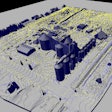Solids size reduction equipment — mills — by their very nature are designed to impart energy to a solid and reduce its particle size. Mills typically have moving parts that rotate at high speeds and have small tolerances between them and the body or screens inside. Additionally, an ignitable dust cloud atmosphere may be present within the mill and/or the downstream receiving equipment when processing combustible solids.
These factors make mills a highly likely candidate for creating ignition sources that can cause dust explosions. So, which types of mills and which powders are at risk? To help answer these questions, there are standard fire, explosion, thermal instability and electrostatic tests available that will assist with the selection of the appropriate mill and/or the selection of appropriate techniques to protect the people and plant from the consequences of dust explosions.
The following information is intended to provide some clarification in assessing the potential for dust ignition and explosion during grain milling operations.
What type of mill can cause explosions? In general, the greater the energy input to a mill, the greater the risk of ignition. The potential for metal-on-metal contact is also a significant factor to mill hazard. Hammer mills, bowl and ball mills, pin mills and air-classifier mills that have moving parts inside are more likely to cause dust cloud explosions, but even Screen mills and Air-jet mills are not entirely risk free.
How does an explosion start? In most milling operations, several different ignition sources are possible. Impact and friction sparks can develop due to the presence of foreign objects or from misaligned or failed components. Electrostatic charge generation can lead to incendive discharges and warm/hot spots (from overheated bearings, for example) can initiate decomposition of combustible materials. Overfeeding mills can also cause product heating and decomposition.
Ignition sources created in such ways can produce dust fires or explosions in connected equipment, such as a receiving drum, dust collector, cyclone, filter/receiver or hopper. Thermal decomposition of many materials can also rapidly produce gas in large quantities, and sometimes this gas can be flammable.
How serious can an explosion be? A misconception is that because mills are relatively small and generally strong, an explosion can only have minor consequences. This is not accurate because the dust cloud volume in connected equipment is often many times greater than that of the mill itself and the design pressure of the connected equipment is often much less than the pressures that can be developed as the explosion develops and progresses. In cases when gas is generated due to decomposition, the hybrid dust-gas mixture can spread outside the mill. Fire may sometimes follow an explosion, amplifying the destructive power.
In one case, several floors of a large powder processing building were destroyed by secondary dust explosions after a mill bearing failure caused catastrophic mill damage and ignition of the product stream. The product filter/receiver ruptured releasing a fireball into the surrounding process areas.
Are you at risk? A number of precautions can be taken to prevent dust cloud explosions and protect against their consequences in mills of all types. The use of separators for preventing foreign objects from entering the mill, temperature probes, and vibration sensors all have their place in reducing the likelihood of an ignition. Explosion isolation systems in the ductwork between the mill and connected equipment can also serve to restrict explosion propagation, but rarely provide the complete solution. The key to establishing whether your process is at risk is an understanding of the ignition sensitivity and explosion severity characteristics of your powders.
A test protocol exists for classifying powders with regard to their suitability for particular mill types – and for identifying the protective measures required if they are to be milled. The test protocol is designed to:
- Identify potential detonating / deflagrating materials
- Identify those materials which are easily ignited as a dust cloud or layer
- Identify those materials which self heat at low temperatures
- Identify those materials which may generate flammable (or inert) gas when they decompose
- Establish the consequence of the explosion
- Establish suitable prevention and protection measures
Vahid Ebadat is the CEO of Chilworth North America, a global leader in process safety, specializing in preventing explosions, fire and accidental chemical releases in plants where hazardous materials are handled.


















